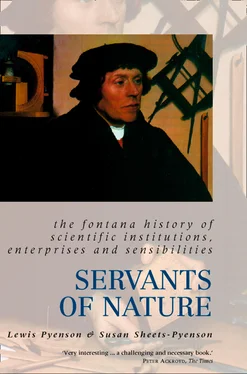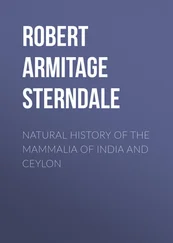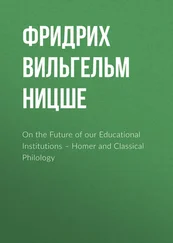The most important scientific societies of the eighteenth century were official institutions, legally recognized by their respective governments. This legal status conferred important privileges on the societies, including technological consulting, control of the scientific press, and self-government. McClellan argues that according to this arrangement, institutions and governments ‘struck a deal’, whereby institutions received ‘recognition, funding, and privileges in exchange for technical service and advice’. In essence, societies and academies sold their expertise and knowledge for the power to control the practice of science within their own cultural milieu. The emerging nation states of Europe supported scientific societies as a gesture of alliance with the forces of rational enlightenment, progress, and modernization.
Scientific associations, coming in many shapes and sizes, also may be arranged according to a pyramid of importance. An elite group of national academies in capital cities belong to the top of the hierarchy: the Royal Society, the Paris Académie, the Berlin Academy, the St Petersburg Academy, and the Royal Swedish Academy. Almost all were devoted to scientific pursuits exclusively; they received generous support and powerful privileges, often dating back a century or more. At the next level fall a host of institutions founded in large urban centres and provincial capitals; these include societies and academies in Edinburgh, Montpellier, Göttingen, Bologna, and Philadelphia. They received only modest financial revenues, they tended to be founded later in the eighteenth century, and they cultivated nonscientific subjects alongside science. The scientific accomplishments of this more heterogeneous group were less uniform and less sustained. The base of the pyramid rested on institutions that never built a reputation; these include societies at Marseilles, Barcelona, and Rotterdam, for example. Many were founded in smaller towns and cities late in the century and did not obtain official recognition for years. They cultivated a range of disciplines and possessed undistinguished memberships.
What makes the eighteenth century unique for the institutionalization of science is that individual organizations – big or little, national or local – interacted to forge a larger institutional network. As the Memoirs of the Medical Society of London, founded in 1773, stated: ‘The principal part of our knowledge must be ever derived from comparing our own observations with those of others. In this view the utility of societies, which afford an opportunity for the mutual communication of our thoughts, must be sufficiently apparent.’ Sending memoirs and soliciting exchanges became a routine activity. This meant that scientific research and information could henceforth be circulated through regular channels. At issue here is something other than publication, which had already been inaugurated through the system of official journals; rather, academic publications found an assured venue of distribution. In a word, the academies began to ‘market’ science, having done their utmost to create an audience.
Nineteenth-century consolidation
Once firmly established in the collective consciousness, scientific societies and academies became arbiters of science. With the French revolutionary zeal to abolish privilege in all of its manifestations, it is hardly surprising that the Académie des Sciences became a prime target. It was an institution, even an instrument, of the king, and it was a bastion of elitism. Myths were perpetuated about how self-taught artisans presented their inventions to a jaded academy, only to be rebuffed and humiliated. Not only did the Académie represent an intellectual aristocracy, but it contained a special class of honorary members selected from the social aristocracy. It met for the last time on 21 December 1792; it re-emerged in 1795 as the First Class (or division) of the Institut de France. (With the restoration of the monarchy, the former title of Académie was likewise restored.)
Even before this reincarnation, the Académie des Sciences had begun to turn its back on its Baconian heritage, particularly the collectivist imperative. Rather than acting to generate scientific knowledge, the Académie emerged as an adjudicator, passing judgement on the merits of its members’ contributions, in pure and in applied fields. Its imprimatur became a coveted sign of national, or even international, prestige. Election to an academy seat became the crowning achievement of a life’s work; appointment to a professorial chair seemed trivial by comparison. Unlike the case during the eighteenth century, all academicians (at least in theory) were equal, since junior ranks had been abolished. By making election a process of ‘filling dead men’s shoes’ – whereby leading contenders most closely approximated the deceased (or soon to depart) academician – the Académie defined the shape of science in France. As Maurice Crosland explains, it was almost as if the subjects included in the First Class of the Institute chose the academicians.
The Académie des Sciences inaugurated new functions during the nineteenth century, such as semiannual public meetings. The Comptes rendus , created in 1835, brought the proceedings of the Academy and the eloquent éloges of its deceased members to the attention of an international community. Crosland argues that the centrality and comprehensiveness of the Comptes rendus tended to relegate all extramural efforts to oblivion. Responsibility for publications belonged to the permanent secretary, elected for life and given a comfortable annual salary of 6000 francs (about 300 pounds sterling).
By the mid nineteenth century, the Royal Society had also forsaken parts of its earlier scientific mission. Its statutes finally recognized that its role in experiment was more passive than active, more imagined than real. Regulations stated simply that the Society’s purpose was ‘to read and hear letters, reports, and other papers, concerning Philosophical matters’. In Boas Hall’s words, the atmosphere of meetings changed from ‘an atmosphere of lively discussion and debate and the frequent display of experiment’ to one that was ‘determinedly formal and lifeless’. This change did not signify that experiment was held in low regard, or that fellows had ceased to be good experimentalists, nor that nineteenth-century experiments could not be demonstrated. Rather, it indicated that the Society’s conventions had changed, placing new emphasis on results rather than processes. Papers might derive from experiment, but they were no longer accompanied by experiential demonstration.
No one disputed that experiment formed the centrepiece of the Society’s activities, only that this approach offered an imperfect and impartial view of the natural world. This was precisely the criticism of seventeenth-century natural philosophers, who believed that experimentalism offered an insufficient replacement for general principles, frameworks, and even theories. The complaint resurfaced among the spiritualists, vitalists, and theologians of later centuries, who found their concerns excluded by a materialist Royal Society. In 1878, the British geologist John Jeremiah Bigsby (1792–1881), for example, lamented the fact that in the Royal Society ‘Belief in no God and no Bible is openly paraded’. His protégé, Canadian paleobotanist John William Dawson (1820–1899), concurred that the religious scepticism of its leaders was ‘eating the heart’ out of science.
The emergence of specialized societies
Since its inception in the seventeenth century, the scientific society has sought to represent a range of philosophical interests. Sometimes art and antiquities were included to accommodate the interests of aristocratic virtuosi; certainly members’ investigations into any part of the natural sciences (and their applications) were welcomed. With the growth in size of the scientific community over the course of the eighteenth century and with the expansion of its interests, organizations devoted to the sciences in general no longer commanded attention. Scientists began to occupy themselves with a more restricted range of human experience, seeking, as well, to associate themselves with others who held similar concerns. As a result, the specialist society – one based on what we would recognize as the contents of a particular scientific discipline – began to emerge. Organizations like the Geological Society of London, founded in 1807, became known for the camaraderie and conviviality exhibited by its members, in contrast to the stiff formality displayed in the proceedings of the Royal Society.
Читать дальше












